
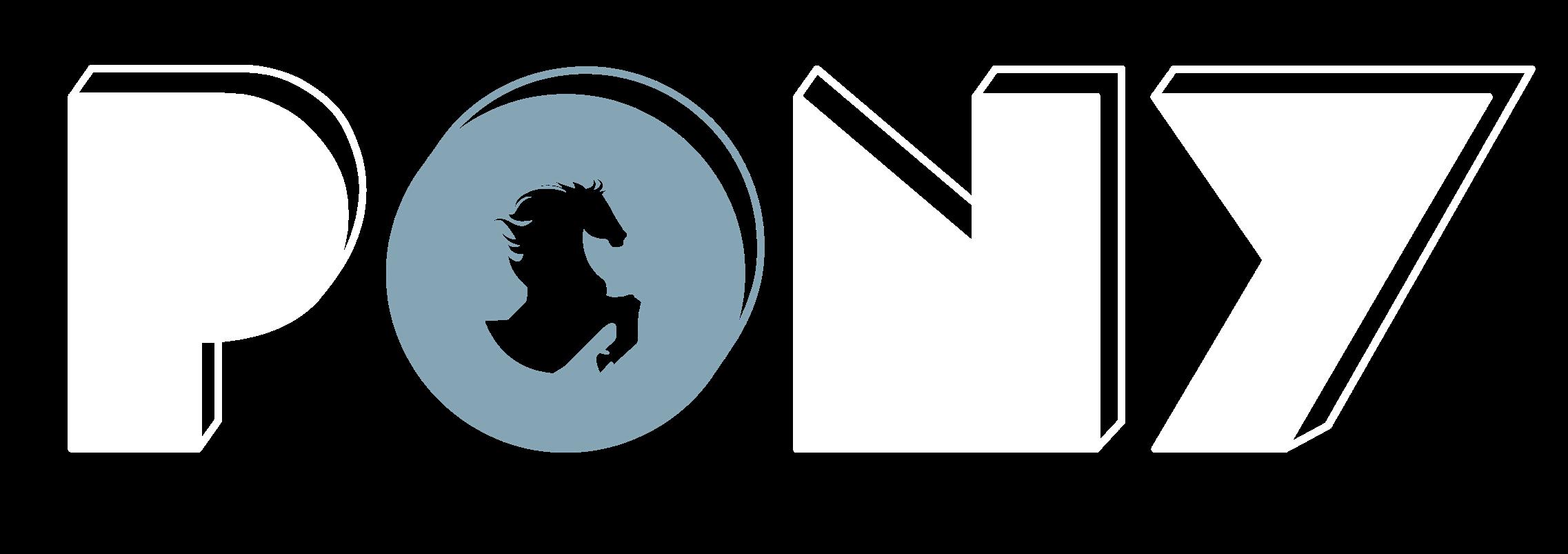





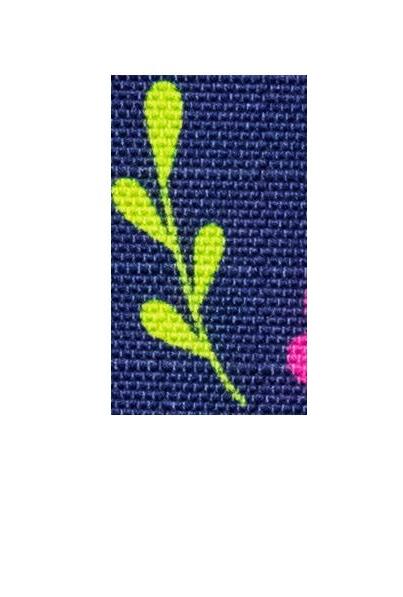

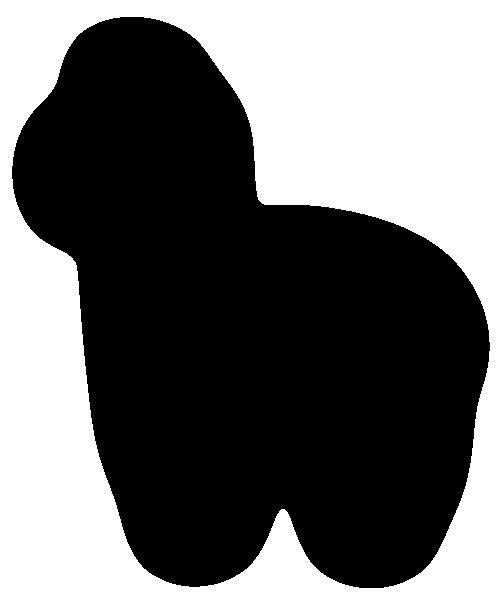


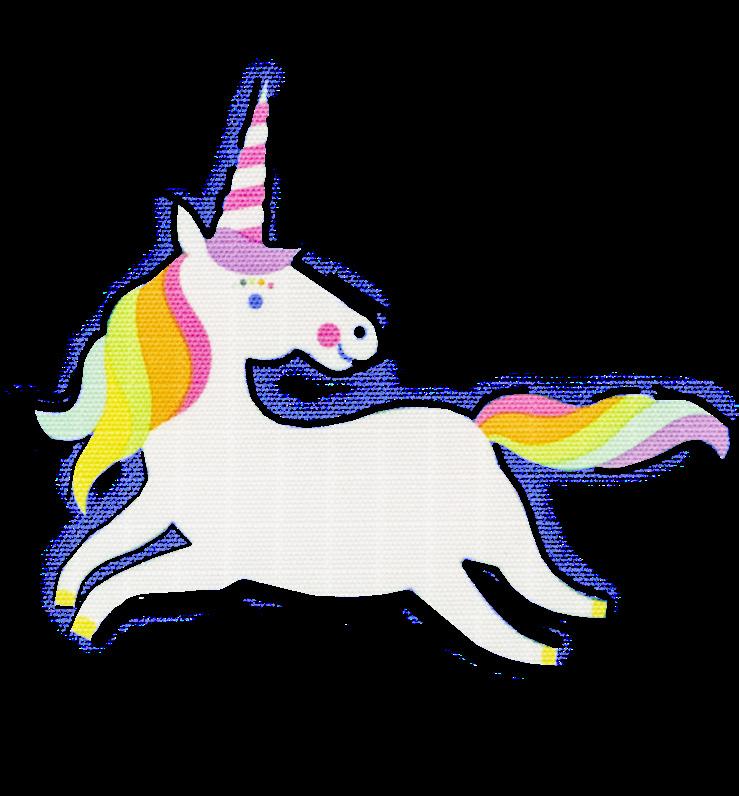
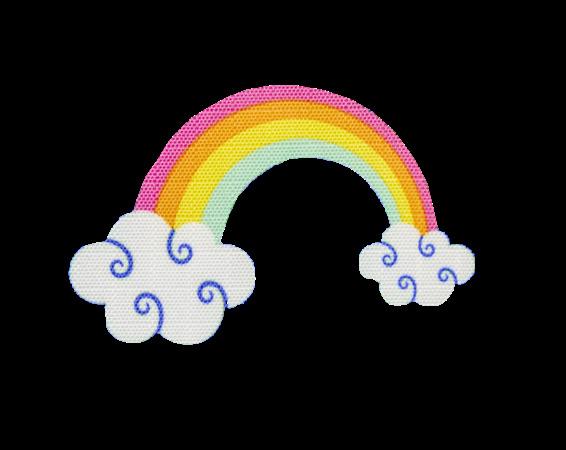
The Funky Rug is a waterproof 600 Denier rug with a 150g fill. Suitable for indoor or outdoor use . Available in Unicorns & Llamas. Available in sizes 70-155cm, in-store and online.
Hello!
Welcome to our April edition of HQ Pony Magazine! This month we’re bringing you an Equitation Special with two big feature articles on the history of the discipline and the Philip Smith Memorial Trophy competitors and an article from Tana Scott detailing the Welcome and Novice levels of the discipline. With the Philip Smith Memorial Trophy being hosted at the Toyota Easter Festival this week, we decided there was no better time to get to grips with this fascinating South African discipline. We want to take this opportunity to wish all four riders –Jenna Eagar, Ashlee Taylor, Erin O’Dwyer and Mikaela Martin – a very successful competition. It’s a huge achievement to be in the final, and we can’t wait to see you all perform!
Other not-to-be-missed articles this month include our special feature on donkeys, Part 3 in the Groundwork series and our Meet the Reader article with Chicago Ferreira.
We hope you enjoy this issue and have a very happy Easter with your family, friends and, of course, ponies! If you’re popping through to Toyota Easter Festival, please come and say hello – we’d love to meet you!
With lots of love,
GET IN TOUCH
We’d love to hear from you and receive your photos, drawings or pony-related thoughts. To get in touch send an email to lizzie@hqmagazine.co.za and we’ll get back to you!
3 welcome
Lizzie and the HQ Pony Team
4
Equitation Special Equitation and the Philip Smith Memorial Trophy Equitation Championships A history Philip Smith Memorial Trophy Equitation Championships Becoming the best rider you can be Equitation Welcome and Novice Meet our readers Chicago Ferreira Groundwork, Part 3 Yield backwards with a direct feel All about donkeys Puzzle fun Pony Q&A Products we love 06 08 16 24 30 34 38 44 46 48
CONTENTS

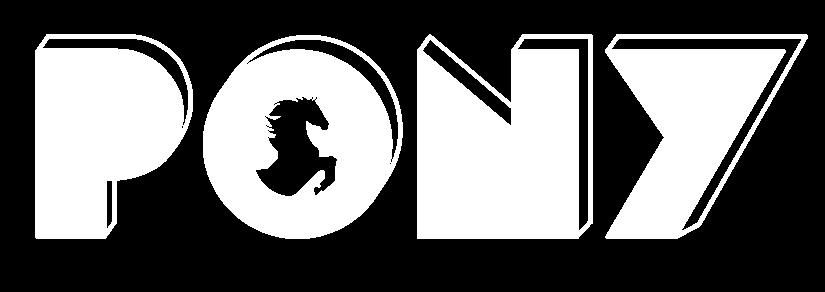
6
Equitation Special
7
Philip Smith Equitation Championships A history Text | Amelia Campbell-Horne Photography | Various Memorial Trophy Equitation and the 8
Horse and rider
Leo Tolstoy once said that "If you want to do something, do it well," and it seems that this school of thought prompted the birth of Equitation in South Africa.
The history
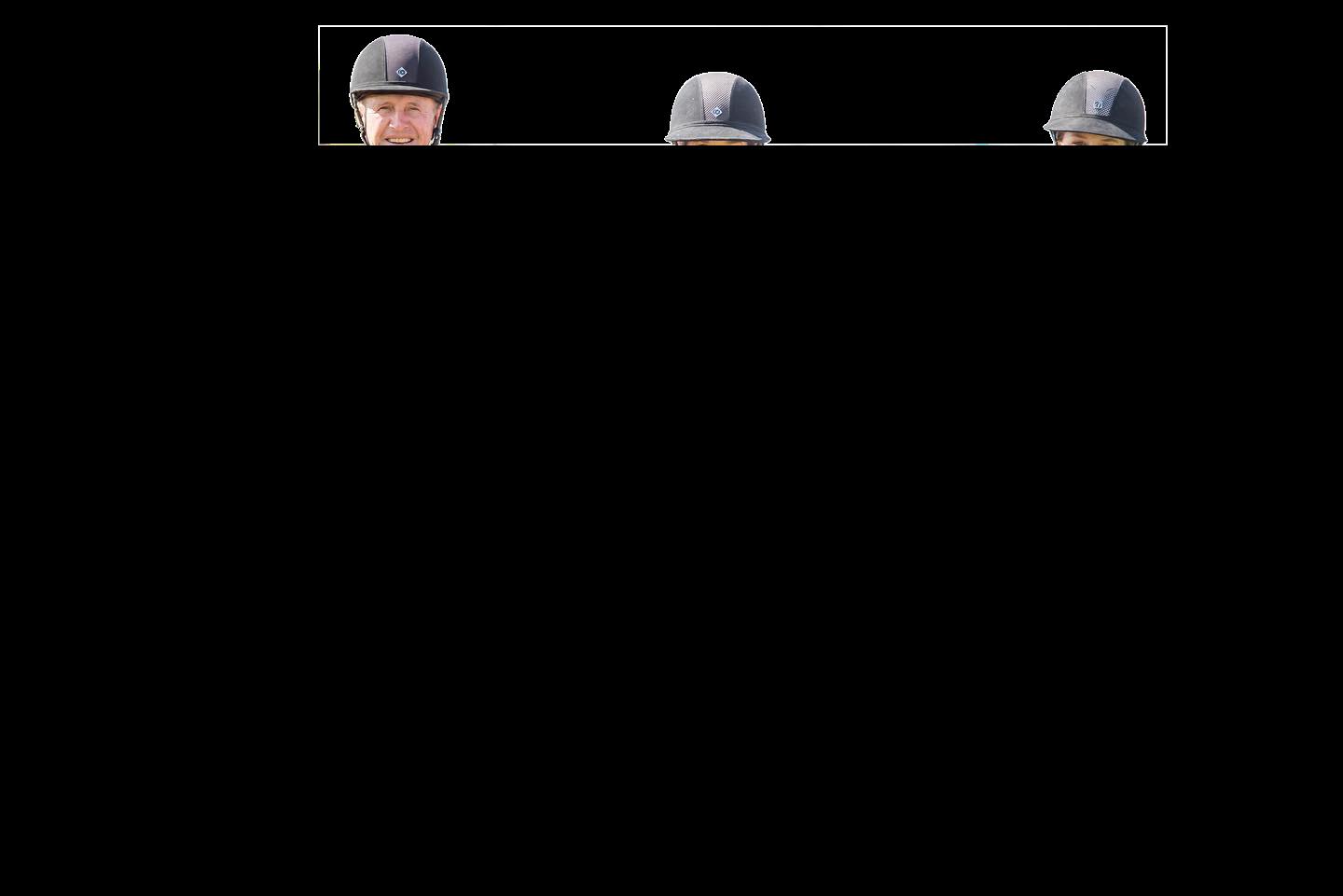
In 1969, George Morris visited South Africa to give clinics in Johannesburg, Cape Town, and Salisbury (Harare, Zimbabwe). At this stage in Southern Africa, a great variety of riding styles and theories were practised. This likely stemmed from the diverse sources of horsemanship; namely farming, military and imported techniques from Europe. However, it was observed by George Morris that despite the eclectic riding techniques, most individuals could produce results with their horses. He rather diplomatically noted that 'some' achieved these results more attractively than others (naming Gonda Butters/Beatrix, Mickey Louw and David Stubbs as examples of the former).
Into this setting, George Morris introduced his American school of thought that presumed that "Perfection of style produces perfection of performance from the horse". This seems a very logical theory, as the perfect style would, by definition, be the most helpful position and series of actions a rider can perform to achieve the best results. Essentially, a rider would be giving their horse the best chance to do what they are being asked to do!
The introduction of this theory led to the realisation that, in general, riders' skills needed improving in Southern Africa and that there was a lack of access to regular and correct coaching.
9
Barry, Lorette and Ashlee Taylor
Horse and rider
The next steps
Following a period of extensive travel and research on this subject, Equitation as a discipline was formally introduced to South Africa by Charlotte Stubbs in the 1970s. The aim of Equitation was to provide constructive feedback to riders (especially those who may not have access to regular coaching) and to improve the effectiveness and correctness of riding in general.
Charlotte Stubbs, when questioned on what it would take to win the National Equitation Championships, said: "hard work would be essential, but the prestige of winning would be enormous for both riders and the instructors". This most certainly was the case then and still is today.
National Equitation Championships – then and now
In 1971 the first National Equestrian Championships were held, with 24 riders (silver medallists) who were provincial winners competing for Gold. Each province could award a maximum of four BP Silver medals, and these individuals were awarded bursaries consisting of subsidised lessons with their instructors and equestrian equipment. The National Equestrian Championship was held over several days and several phases in the indoor arena at the historic Rand Show venue, where the silver medal competitors were eliminated on a round-by-round basis. The penultimate round included the top six riders and required swopping of horses. The final round was then a head-to-head between the top two riders who had to complete a flatwork and jumping test on a 'mystery horse'. This competition, over time, evolved into what is now the SA Junior Individual Equitation Championship.
Fast fact
Barry Taylor made it to the top six of the competition twice! He finished 4th in 1974 and 6th in 1975! Barry also coached the first winner of the PSM: Casey Lourens (2001), alongside Claire Webb.
In 1982 the Prestigious Witwatersrand Agricultural Society (WAS) Supreme Equitation Championship was launched and quickly became a new title for all ambitious young riders to aspire to win. The title was won by some of today's top riders, including Jonathan Clarke and Andrea Harrison. The WAS Championship invited the top six competitors from the SA Junior Individual Championship and used six borrowed horses, three for the flatwork tests and three for the jumping tests.
In 2001 the Philip Smith Memorial (PSM) Trophy became the successor to the WAS Championship. It is named in tribute to Philip Smith, an incredibly talented and stylish rider who represented South Africa on many occasions. The format was again changed as it was becoming difficult to loan the calibre of horses the competition required. Today the PSM invites only the top four finalists from the South African National Junior Individual Equitation Championships in the preceding year to compete.
10
Fast fact
Two of the Clarke brothers won the WAS: Jonathan in 1983 and Jeremy in 1986.
Horse and rider
The first day of the Championship is the flatwork test, where each rider will ride the test on their own horse and then on each of the other three horses. They are judged on their ability to produce smooth and correct movements on a variety of horses.

The second day of the Championship is the jumping test which they ride on their own horse and then the other horses. This starts with a gymnastic, ridden one-handed with no stirrups, followed by a short course of jumps set at a height of 1.15m/1.20m. Competitors are not allowed any outside assistance for the duration of the competition, including for course walks and warm-ups! A glance at the previous winners of this event makes the trophy one that any young rider would aspire to win!
When Equitation was launched in South Africa, the main aim was to uplift the standard of riding, and this goal was most certainly achieved. This is still the goal of Equitation today, and becoming a more correct and effective rider should be an ideal for all riders. To quote international Showjumper Jessica Springsteen, "The best riders in the world with the best horses make it look so elegant and graceful. When you watch it done well, it looks so easy that it's difficult for the public to understand how hard this really is." This 'effortful effortlessness' is what we should all strive for as riders.
11
Horse and rider
The 2023 Philip Smith Memorial Trophy competitors
The four competitors participating in the PSM Trophy competition this year are Jenna Eager, Ashlee Taylor, Erin O'Dwyer and Mikaela Martin. You can hear more from these talented girls in the full interviews in this edition.
Jenna
1st HORSE Capital Conlanc
COACHES Chad Cunnningham
DISCIPLINES
HOW ARE YOU PREPARING?
Showjumping (1.30m) Equitation (Open)
I’ve been working extra hard both off and on my horse, improving my fitness and weaknesses. I am doing extra dressage lessons to help me prepare for the dressage portion of the Championship, and have continued attending my weekly jumping lessons.
COMMENTS FROM COACH/PARENT
Mandy Eager: “As parents, Jenna is already a winner in our eyes. The commitment and dedication that goes into preparing for a competition at this level have left us in awe of her determination, dedication and love for the sport. Winning the Phillip Smith Memorial Championship would mean that Jenna has achieved one of her top goals in her Junior career, which will inspire her to reach even further.”
Ashlee Taylor
2nd
Callaho Lariboo
COACHES Georgie Roberts, Whitney Deverneuil, Barry & Lorette Taylor
DISCIPLINES
HOW ARE YOU PREPARING?
Showjumping (competed up to 1.40m) Equitation (Open)
I have been having Equitation lessons with Whitney Deverneuil, Dressage lessons with Georgie Roberts and Jumping lessons with my parents, Lorette and Barry Taylor. I’ve also ridden a couple of horses that I’ve never ridden before.
COMMENTS FROM COACH/PARENT
The Taylors (Barry and Lorette) have had five previous PSM winners. Each of those was special, but to have their daughter win it would be something really special!
NAME
AGE
QUALIFIED
18
NAME
AGE
QUALIFIED
18
HORSE
12
Horse and rider
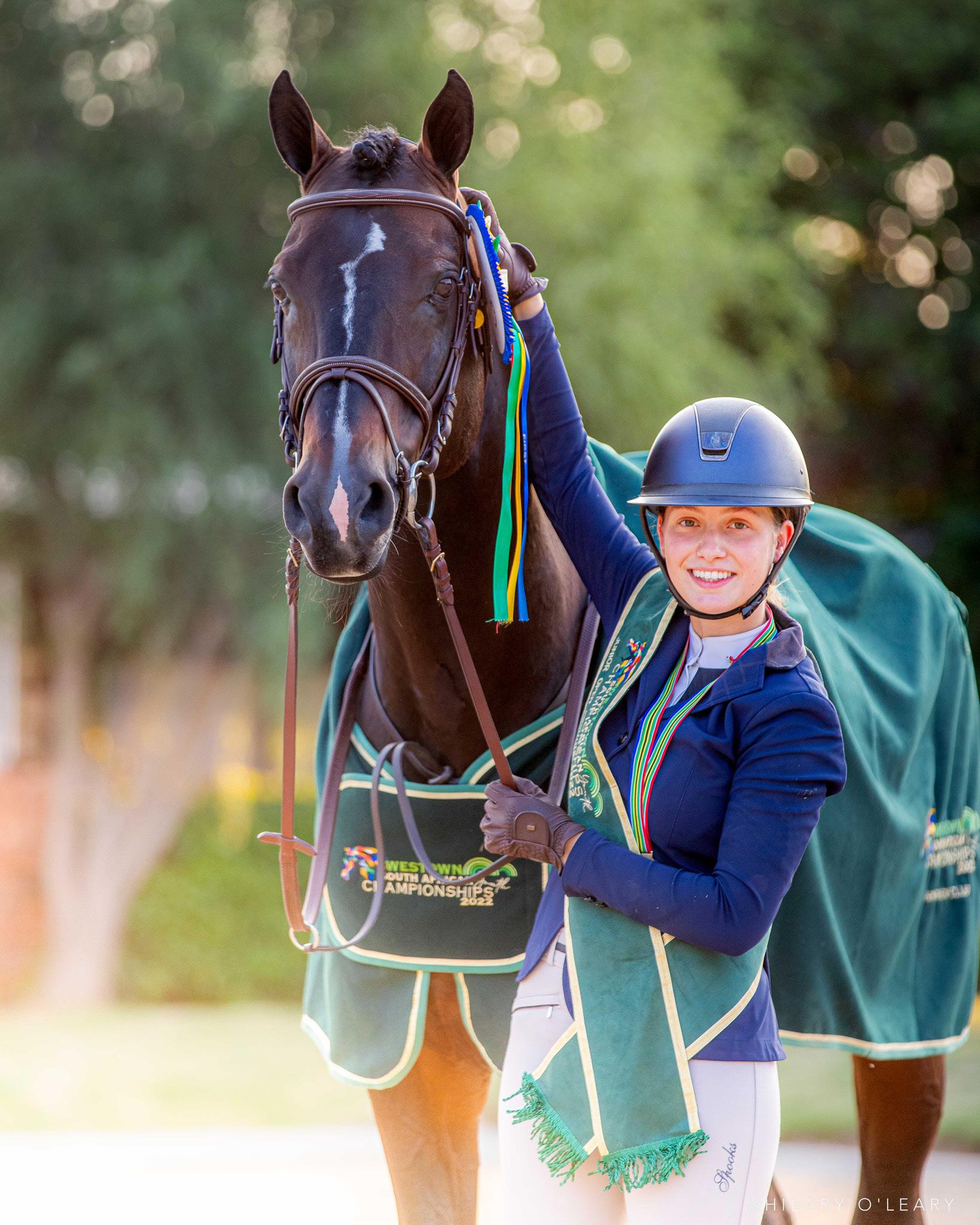
13
Jenna Eager and Capital Conlanc
NAME
Erin O’Dwyer
AGE 17
QUALIFIED 4th
HORSE Callaho Luigi Vella
COACHES
DISCIPLINES
HOW ARE YOU PREPARING?
Kelly Slater and Joanne Van Achterbergh
Showjumping (1.30m) Equitation (Open) Dressage (Elementary)

Fortunately, my coaches convinced me to tackle SANESA Elementary Dressage last year which really helped my flatwork. I’ve also been practising the actual flatwork test and next week we’ll start some gymnastic training. I’ve been riding some of the horses at Kincardine belonging to friends in the yard and have gained a feel for a variety of rides.
COMMENTS FROM COACH/PARENT
Kelly and Jo: “There isn’t a competition amongst adults or juniors that tests a rider’s skill and feel like the Philip Smith does. The Philip Smith isn’t only one of the most prestigious competitions that a rider can win, it is also one of the few competitions where the coaches are actively acknowledged. This helps to validate the hours of preparation put in by the entire team.
The Philip Smith tests a rider’s horsemanship on so many levels, and while the standard of riding is constantly improving, to be considered amongst the coaches that can teach the lost art of “feel”, is one of the biggest accolades of any coach's career."
14
Erin O'Dwyer
Horse and rider
NAME Mikaela Martin
AGE 17
QUALIFIED 5th
HORSE TBC
COACHES Amy Tolmay
DISCIPLINES
HOW ARE YOU PREPARING?
Showjumping (1.35m) Equitation (Open)
I am working very hard in preparation for this prestigious event to try my best to do the competition justice. My amazing Equitation coach, Amy Tolmay, and I are training tirelessly to improve my position to the best of my ability. Over the next couple of days, I will be riding as many different horses as possible and practising my Dressage as much as possible.
Belinda a.k.a Mom: “Coaching Mikaela and sharing a passion with her is something very special. She has always been extremely dedicated so for me and the yard, it would be extremely rewarding for her to win the Philip Smith.”
COMMENTS FROM COACH/PARENT
Amy: “Mikaela Martin and I are still a fairly new rider and instructor team, but our journey has been full of incredible moments from Day 1. She is one of the most dedicated, determined and coachable riders I have had the pleasure of instructing. If she won the Philip Smith Memorial Championship, I would be incredibly proud of all the efforts she has put into herself and her horses.”
Fast fact
Lorette Knowles-Taylor has coached four PSM winners, Alexis Stais (2011), Lawrence Mowatt (2012), Chelsey Gertenbach (2013) and Cheyenne de Beer (2017).
Final thoughts
Fast fact
Both Gertenbach sisters have won the PSM; Kayla in 2008 and Chelsey in 2013.
If you want to check out the Philip Smith Memorial and support the girls in an event that you can only see once a year, the Flatwork tests will be on Thursday 6th April in the Stubbs Arena with the Briefing and Draw taking place at 10.00am and the Showjumping Phase is the last class of the day in the Bob Charter Arena on Saturday 8th April.
15
Philip Smith Equitation Championships Becoming the best rider you can be
| Various Memorial Trophy 16
Text | Amelia Campbell-Horne Photography
Horse and rider

This year's Philip Smith Memorial Equitation Championship
We caught up with this year's finalists ahead of the Philip Smith Memorial Equitation Championship, which will be held at the Easter Festival at KEP this year. These are Jenna Eager, Ashlee Taylor, Erin O'Dwyer and Mikaela Martin. Mikaela Martin has stepped up as first reserve as, unfortunately, Olivia Roberts is unable to participate this year.
17
Capital Conlanc
HQP: Can you tell us a bit about yourselves?
Jenna: My name is Jenna Eagar, and I have just turned 18. I am originally from Cape Town but relocated to Johannesburg early last year to pursue my riding goals. I've been riding for about 13 years now, and it truly is my one love and passion.
Ashlee: My name is Ashlee Taylor. I am 18 years old, and I'm currently in matric at Dainfern College. I was born and have lived in Chartwell, Johannesburg, my whole life. I was born into a horse family, so I have been riding horses since I was about 3 or 4. I have showjumped all my life, and I did some vaulting for quite a while when I was younger, but showjumping has always been my favourite.
 Ashlee Taylor
Ashlee Taylor
18
Horse and rider
Erin: My name is Erin O'Dwyer, and I am 17 years old. I first started competing in SANESA when I was nine years old, but I only did my first graded shows two years later. My competitive riding slowly progressed from there, and I had some lovely championship wins in the lower grades, primarily in showjumping.
Mikaela: My name is Mikaela Martin, and I am a 17-year-old showjumper and equitation rider. I've been lucky to grow up on a competitive yard called Penbritte, owned by my mom, and I have therefore been riding my whole life.

HQP: What does it mean to you to have qualified for the Philip Smith?
Jenna: I compete in both show jumping and equitation, but it's always been a dream of mine to compete in the Philip Smith Memorial. Qualifying for the PSM has definitely been among the top highlights of my riding career so far, as it's something I've been aspiring to do for a very long time now.
Ashlee: I have always wanted to qualify for the Philip Smith as I feel that it is a demonstration of how well you can ride any kind of horse. I think to just qualify for the Philip Smith is a huge achievement. It is definitely special that I have qualified because it was my last year to get into the top four, and it was on a horse that I produced myself.
Erin: When I went down to Shongweni in December 2022 for SA Champs, I never even imagined I could qualify for the Philip Smith Memorial! I was just going down to do my best and have fun, and I must admit I was focusing more on the showjumping side. I love the adrenaline of jumping, and my precious Lu never fails to impress. In my mind being selected to represent Gauteng at SA Champs at the Open level was already an achievement I hadn't expected. I feel so privileged to be able to take part in this competition and to compete against such amazing riders, and I intend to enjoy every second of it. I know this event is going to fully test my riding, and I am excited to be taking part.
Mikaela: I am extremely excited to have qualified to compete in the Philip Smith as I feel it is the ultimate title that any junior rider should aspire to, and it has been a lifelong dream of mine.
 Mikaela Martin
Mikaela Martin
19
Horse and rider
HQP: Can you tell us more about the horses you qualified on?
Jenna: I am extremely lucky to have been given the ride mid-last year on the wonderful Capital Conlanc by Capital Stud. He is truly a gentleman and such a pleasure to ride, always trying his best to please. We've managed to build a strong partnership this past year, and he has helped me achieve a number of my goals, with a few of them being winning the Gauteng Equitation Championship and the Youth South African Equitation Championship.
Ashlee: Callaho Lariboo is owned by Govett Triggol. She is currently seven years old, and I have ridden and produced her since she was four years old. She was my third option for the SA Champs Equitation because I never saw her as an equitation horse because she is quite sensitive and still inexperienced. As I couldn't ride the first two options of horses, 'Boo' was the last option, and me riding her in the equitation ended up being a blessing in disguise, as ultimately she was the best choice.
Erin: Callaho Luigi Vella (or Lu for short) is my onein-a-million real-life unicorn. Over the last two years, we have developed an unbreakable bond, and I feel he knows my every instruction before I even need to tell him. He loves playing in the mud, but somehow, my amazing groom Deverson keeps him spotless, and everyone else thinks he is the definition of a white steed. He always knows when he has overachieved and demands copious amounts of carrots and attention in return.
Mikaela: I qualified on a young Warmblood that we bred called Salucci, aka Sushi. I took over the ride on him from my mother just before SA Champs, which was his debut in equitation. Sushi has the biggest personality for his small size, and he matches this with his scope and bravery. We came 5th in the Equitation at SA Champs, which was impressive for his first try. He has unfortunately been sold subsequently, so it's still up in the air as to who I will compete on!
HQP: How are you preparing for the competition?
Jenna: I've been working extra hard both off and on my horse, improving on my fitness and weaknesses. I am doing extra dressage lessons to help me prepare for the dressage portion of the Championship, and I have continued attending my weekly jumping lessons.

20
Mikaela Martin
Ashlee: I have been having equitation lessons with Whitney Deverneuil, dressage lessons with Georgie Roberts and jumping lessons with my parents, Lorette and Barry Taylor. I've also ridden a couple of horses that I've never ridden before.

Erin: Fortunately, my coaches convinced me to tackle SANESA Elementary Dressage last year, which really helped my flatwork. I've also been practising the actual flatwork test, and next week we'll start some gymnastic training. I've been riding some of the horses at Kincardine, belonging to friends in the yard and have gained a feel for a variety of rides. I have struggled to find enough time to ride as much as I would have liked, as I am also writing matric this year and must focus on my academic studies.
Mikaela: I am working very hard in preparation for this prestigious event to try my best to do the competition justice. My amazing equitation coach, Amy Tolmay, and I are training tirelessly to improve my position to the best of my ability. Over the next couple of days, I will be riding as many different horses as possible and practising my dressage as much as possible.
HQP: What do you think makes the PSM so special?
Jenna: Equitation is all about the rider and the effect they have on whatever horse they're riding. Seeing as only the top four riders of each year qualify for The Philip Smith, it's a showcase of the youth and their abilities to perform under strenuous conditions. I believe that this is what makes the Philip Smith Memorial so unique, as it tests the riders in various situations and disciplines, such as showjumping and dressage.
Ashlee: The Philip Smith is an annual event that has been around for a very long time. It's so unique because it's only a small bunch of riders (the top four riders from the SA Champs), and it's something that you must qualify for. It's also unique because it's one of the only events that requires the riders to ride the other competitors' horses. It also includes two different disciplines, dressage and showjumping, which tests your all round riding ability. I think it is a testing competition that is very different from what riders usually face.
21
Erin O'Dwyer
Horse and rider
Erin: This event is unique as only four riders a year qualify to compete, and the format is nothing like any other equitation event we have ever ridden. The tests themselves are far more extensive than standard equitation, and most of your scoring comes from riding horses you don't know. I know the other competitors are excellent riders, so the competition will be very strong, but at this point, I don't know which horses they will be electing to ride, so I really don't know what to expect.
Mikaela: Although showjumping is my main focus, I feel equitation is very important, and all showjumpers should do it as it is beneficial for improving your seat and your horse's schooling, which will help with jumping. The Philip Smith is a very special event as it is by invitation only, and it celebrates and appreciates such a beautiful discipline.
HQP: What do you have to say to other young riders who want to compete in the Phillip Smith one day?

Jenna: I'd most probably tell them that hard work and perseverance always pays off. No matter how tough it may get or how impossible something may seem, the ability to push past these challenges is what allows you to develop as a rider. At the end of the day, we all have flaws and weaknesses, but it is up to each person whether these weaknesses will rather define you or shape you.
Ashlee: Never give up on your dreams even when they feel like they aren't in reach.
Erin: Don't be too serious about qualifying; once you put too much pressure on yourself, you stop focussing on how you ride and rather what you are riding for. Equitation is a mental test as well as a physical one. If you're too hard on yourself in your thoughts, it will reflect in your riding. Then, finally, remember it is about effectiveness over attractiveness, so ride naturally and to feel rather than riding to look pretty for the judges.
Mikaela: I would tell them that it was one of my dreams when I was a young rider, but a dream will remain a dream unless you work towards it! So, to make a dream a reality, you need to put your mind to it and achieve it!
Good luck
Thank you, girls; we wish you all the best of luck!
22
Jenna Eagar
did you know?
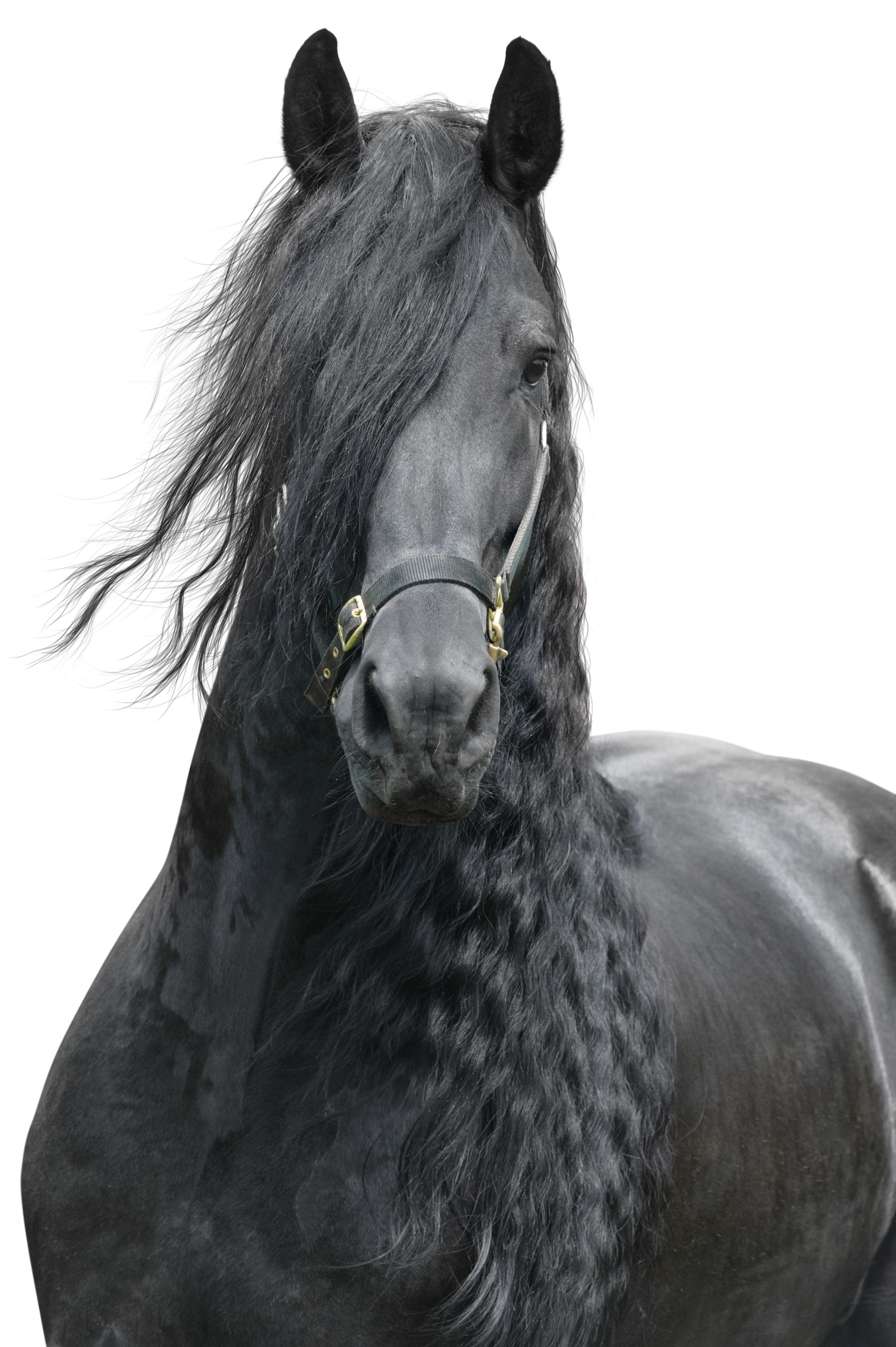

Friesians originated in Friesland, a northern province in the Netherlands. 23
Text | Tana Scott
Equitation Welcome and Novice
In this article, we will look into the first two levels of Equitation and what each level expects from the rider as well as the different types of exercises and movements that can be found in the tests at each level. Similarly to dressage and showjumping, Equitation can be separated into Graded and Ungraded classes. When a rider is competing at the Ungraded level, they can ride the same tests as Graded riders, win prizes, and be judged by the Equitation judges; however, they cannot earn points or compete in South African Championships for an Equitation team. Graded riders, on the other hand, can win prizes, get grading points on their profiles and be chosen to represent their province in an Equitation Team at the South African Championships. Each level in Equitation can be ridden Graded or Ungraded, except for the Welcome level, which is always ridden Ungraded.

24
Welcome level
This is the lowest level that one may ride in non-SANESA Equitation shows. This is the level where all the top Equitation riders began their careers. It is a great level to illustrate exactly what is expected of an Equitation rider and is an excellent introduction to Equitation generally.
This level consists of basic movements, transitions, and courses where the riders can put their skills to the test and gain a good feel for what’s ahead of them in the Equitation discipline.
Each test in Equitation is divided into parts. A Welcome test consists of two parts, part one is the flatwork part of the test, and part two is the jumping part of the test.

25
Part 1
The transitions that one can expect to see in a Welcome test are: walk to halt, walk to trot and trot to walk, trot to canter and the reverse, and canter back down into the trot. All the movements are to be ridden consecutively. Once the rider enters the arena, they are asked to stop and raise their hand at the spot from which they would like to start. From there, the announcer will read out the test as per the written test, and the rider will begin their test.

The types of movements that one can expect in a Welcome test Part 1 are as follows:
• Trotting poles
• Canter poles

• Trotting poles on a curve
• Cantering one jump on a circular track (2 efforts)
• A gymnastic of a placing pole, a cross, and one stride to a vertical
Part 2
The course of a Welcome test, like every other Equitation test, consists of 8-10 numbered fences, all of equal height, which are set at 80cm for horses and 60cm for ponies. In this course, which is ridden directly after Part 1, the rider can expect to ride related distances, combinations and fences such as oxers and verticals. In Part 2, the judges will assess and comment on the following:
• The rhythm of the canter
• The track and use of the arena
• The accuracy of the rider in riding the correct distances to each of the fences
• The position the rider has both over the jumps and throughout the rest of the course.
Throughout the course, if the rider knocks a pole off the fence, they will be given four penalties, just like the showjumping rule. If the rider makes an error in the course, the rider will be given two penalties. Once the rider has completed the whole course, the test is seen as finished, and the judges proceed to give their scores for Part 1 and Part 2, respectively.
26
Horse and rider
Novice level
After one has competed in the Welcome level or is comfortable and confident enough to enter the next level, they will enter the Novice level. This is the second level in Equitation, and the rider will notice an increase in technicality and difficulty. The judges will be looking for balance and functionality of the rider’s position, and the tests should be planned so that they flow seamlessly. The heights of the fences increase, and the judges expect to see an improvement in the riding and accuracy of the rider throughout the test.
Part 1
Part 1 of the Novice tests should be ridden smoothly as per the plan decided on in the course walk. The judges will be looking for a bit more control and effectiveness of the rider and an overall smooth round for the horse and rider combination. The Novice tests are expected to test the rider’s capability through more difficult and carefully chosen exercises, allowing the rider to showcase their skills to the judges The types of movements that one can expect in a Novice test Part 1 are as follows:
• Trotting a figure 8 over trotting poles
• Cantering two poles on a circle, changing rein through the circle and then cantering the same two poles in the opposite direction
• Trotting poles on a circle followed by a straight line and a circle over another pole in the opposite direction
• Cantering one jump on a figure 8 track (three efforts)
• Jumping verticals on a related distance
• A gymnastic of a bounce, one stride to a vertical and two strides to a vertical
• Cantering jumps set at right angles.
If these movements are ridden correctly, and the horse and rider’s skills are showcased in an effective and stylish way, the rider’s score will be boosted significantly, as these movements tend to be the most complicated elements of Part 1 of the test.


27
Horse and rider
Part 2
Like in the Welcome level, Part 2 is ridden directly after Part 1 and expects the rider to plan their last movement of Part 1 to flow smoothly into Part 2 of the test. This will show the judge that the test has been well planned and that the rider has put in the effort behind the scenes to improve the overall performance of the test. In this part of the test, similar to the Welcome level tests, the course will consist of verticals, oxers, related distances and combinations. Whilst the rider is jumping the course, the judges will assess and comment on the following:
• The rhythm of the canter
• The track and use of the arena
• The accuracy of the rider in riding the correct distances to each of the fences
• The position the rider has both over the jumps and throughout the rest of the course.
Next time
Both the Welcome and Novice levels are good foundation levels and give riders a taste of what is to come in their Equitation careers. Each level of Equitation requires an extra level of skill from the horse and rider combination. In the next article, we will discuss the two top levels in Equitation, Intermediate and Open.

28
did you know?
Every Thoroughbred today can be traced back to just three stallions that were used as foundation stock. These are the Darley Arabian, the Godolphin Barb and the Byerly Turk.


29
Meet our readers Chicago Ferreira

30
Horse and rider
Early days
I grew up in Centurion (Pretoria), and then in 2021, after the pandemic, our family moved to Randjiesfontein in Midrand to be closer to my grandparents, in the centre of Johannesburg’s equestrian hub.
I discovered my love for horses four years ago, as an 8-year-old, at a friend’s birthday party, where I sat on a pony for the first time. I had my first riding lesson at a local riding school the following week. That same year our lovely neighbour up the road, Aunty Anna-Marie Verhoef, gave me the ride on her dear little pony named Lady for two wonderful years until I sadly outgrew her. Starting out, my parents wanted me just to have fun with my pony and enjoy her, so that’s what we did for six months before I started having lessons with her. Every afternoon after school, I rode my bicycle to visit Lady, and with the help and guidance from Lady’s kind owner, I learnt how to tack her up, build little exercises with poles on the ground, and enjoyed many hacks and outrides along the bridle paths in the estate.
Having a pony as a child taught me an immeasurable amount as a human being and as a horse person. I learnt responsibility and diligence from knowing I had a pony to take care of after school and learning the consequences of my decisions when I neglected to ride her as often as I should have (cue a fresh pony under the saddle). My parents are non-horsey and naively thought that I was just going through a 'phase', but here we are four years later, much to my parent’s surprise, discussing my plans to travel abroad when I graduate high school to pursue a career in the equine industry.
Moving onto horses
In July 2022, my father’s company transferred him to Polokwane, which is now my home. Shortly after moving to our new town, I was fortunate enough to have another lease horse for six months until Christmas 2022, when my dreams came true. Under the tree, I was gifted my very first horse I could really call my own - Jumping Jack.
The Ranch
Fast forward to three months later at The Ranch, where I competed with Jack in the 0.80m classes alongside some of the top riders in South Africa. I was ecstatic to be riding my own horse at a graded show, and nothing could break my spirit until my coach Shea Wright broke her leg the day before our show was due to start. I was devastated for Shea but also terribly nervous to not only venture into this new milestone with my trainer in a wheelchair but to add to the panic, I was tasked to ride her horse in the 0.90m classes on her behalf. Talk about pressure!
My name is Chicago Ferreira. I’m 12 years old and recently rode my first SASJ graded show at The Ranch Equestrian Centre.
31
Horse and rider
Thankfully riding has taught me that life will throw a curveball at the best and worst of times and that resilience is the name of the game. So I put my brave face on and tackled this challenge with both hands firmly on the reins. Not only did I manage to safely complete each round, but Jack and I went on to place second in our first class and WIN our championship class! A moment I will never forget; the pride and sense of achievement is a high I will chase for the rest of my life, and the results reflect the dedication, determination and overwhelming love for my partner Jack who carried me safely around each course of jumps.
Making it work
Living hours away from the equestrian hub in Midrand has its challenges. Still, regardless of where I find myself living, the support from my parents, the phone calls with my trainer in Johannesburg and lessons during school holidays, and a plethora of online resources give me enough to work with as an aspiring equestrian athlete.
South Africa’s Pony Club has been an amazing stepping stone for me as a child born into a non-horsey family. Pony Club is notably affordable (even for a primary school pupil) and available to riders of any level all over the country. Pony Club offers a vast amount of study material for download online, monthly get-togethers, pony camps, and opportunities to learn hands-on whether you have a pony of your own or not. I have made friends and met a wonderful community of equestrians passionate about teaching young riders like myself the fundamentals of horsemanship.
My goals for this year are to grow my partnership with Jack and work on perfecting basic skills like transitions and contact. I’d like to try my hand at eventing once I feel that our dressage game is solid enough and hopefully go up a grade or two in showjumping to compete in the metres in the next year. It would be a dream to get our own horsebox to travel the country for shows, but until then, I am focused on becoming a more confident rider and learning from every opportunity I have in the saddle.
Riding heroes
I admire and look up to my trainer Shea as a rider and horsewoman, her kindness in and out of the saddle and her ability to adjust to any horse she is given to ride. Another top rider I admire from the sidelines is Charley Crockart; I love following her journey in the ring with her amazing string of horses.
Thank yous!
Thank you to SASJ and The Ranch Equestrian Center for an unforgettable show with a positive and calm atmosphere. Thank you to the sponsors for the generous prizes; I used my winnings to spoil my friends and family with a massive sushi platter to thank them and celebrate our results at the end of the weekend. I will definitely be entering shows at The Ranch again, as long as they are equally as well run as this last one!
I’d like to use this opportunity to thank my parents, grandparents, my trainer in Polokwane (Kerry Mackie-Joubert), Ryan and Caryn Sander, and everyone who has contributed to my journey thus far.
32
did you know?
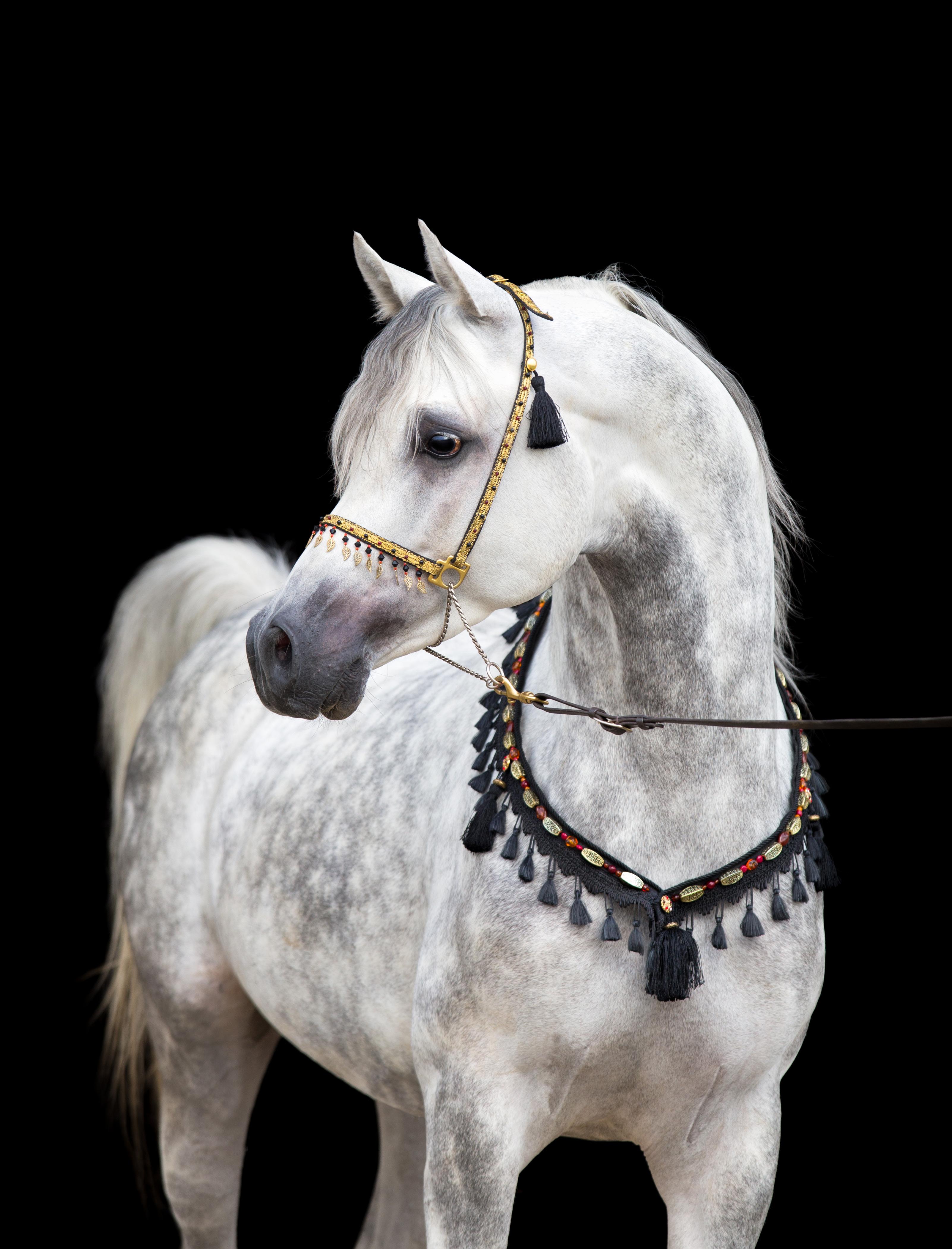
The most common colour of Arabian horses is grey, because grey horses were often favoured by royals and the aristocracy of the past, so more of them were bred. 33
Horse and rider
YIELD

BACKWARDS WITH A DIRECT FEEL
Part 3
GROUNDWORK
34
Over the past few months, we’ve received lots of questions about getting started with groundwork. Whilst it’s best to work with an instructor to get started, there are a few basics you can teach at home that form the foundation of all groundwork activities. Over the next few issues, we will look at these basic building blocks of your groundwork toolbox and help you to set up a solid foundation for your in-hand work.
In our last two issues, we looked at asking your pony to yield forwards. In this issue, we will ask your pony to yield softly backwards from a direct feel on his nose.
YIELD FORWARDS WITH A DIRECT FEEL
Equipment
A halter and long lead rope Gloves
How to do the exercise
NOTE
If your pony is truly soft, yielding and balanced, backwards will be a two-time gait as he will move his feet in diagonal pairs, just like in trot.
Stand next to your pony’s head, facing him and place your hand on his nose with your fingers touching each side of the bridge of his nose about where the noseband sits (i.e. not obstructing his nostrils).
He may not enjoy you touching his nose or he might try to walk off but aim to keep your hand gently in place until he settles and accepts you touching him there. NOTE: If this proves a real challenge for your pony, just practice putting your hand on his nose for a few days before asking for the next steps. The face is a sensitive area, and we need to give our ponies time to adapt.
Once your pony is calm and not resisting or pushing, lift your energy, focus it behind him with clear intention and apply gentle pressure on the bridge of his nose. NOTE: There are very sensitive structures around the nose, so your pressure must be very light. You are NOT trying to push your pony backwards. The motion is more of a light squeeze on either side of the nose.
When your pony has given one step back or even shifted his energy back, reward him immediately by releasing the pressure, removing your hand and saying well done.
Once your pony gets the hang of this, you can ask him to take two or three steps before removing your hand. Over time, you can get your pony to back up a long way using this technique, but start slowly and build up to this.
A helmet A longer stick e.g. a dressage stick
35
Horse and rider
Points to note
Try to focus your energy straight back behind your pony to encourage him to back up straight, but remember that your pony has one stronger side and one weaker side, so he is likely to tend to back up one way or the other. Do not be fussy about this initially; rather, work on it over time.
Troubleshooting
If your pony fights your hand on his nose, be patient. Some ponies can find having your hand on their nose extremely unpleasant, particularly those who have worn very badly fitted tack, such as tight nosebands or flash straps. For these ponies, it is best to just try and keep your hand there lightly or even to stroke him gently on his nose until he can accept it before asking for movement.
If your pony does not move backwards, use the halter gently to move his head over the front foot that needs to move back first and ask him to take a side step rather than a back-up step. This normally acts to free up the feet and help the pony to move back more easily.

36
Horse and rider
If your pony still doesn’t go backwards, don’t increase the pressure on his nose, but rather rhythmically flick the end of the leadrope or stick towards his chest to encourage him back.

If he is still struggling to go backwards, it might be worth discussing this with your instructor or vet to ensure that there isn’t another issue that is making this movement difficult. Some health problems, such as stifle or sacroiliac issues, can make it difficult or painful for a pony to back-up, and these need to be looked for in ponies who are very resistant to backing up.
If your pony tries to evade your request by dropping his head down - wave your stick, or stamp your foot on the ground to discourage him.
If your pony tries to evade by throwing his head in the air, try to keep your hand in place (although this can be a challenge if you have a very tall pony) and spend time encouraging him to accept your hand on his nose, using the process described above.
ULTIMATE GOALS
The ultimate goals of this exercise are to: Allow you to keep your pony at arm’s length when needed. Start to teach the back-up so that the back-up under saddle is easier.
MAKING THE EXERCISE MORE DIFFICULT
Once your pony reliably follows your feel backwards, you can start to specify which foot your pony moves. To do this, ask whichever front foot looks ready to move first to take a step backwards by applying gentle pressure on whichever of your thumb or forefingers are on the same side of the nose as the chosen foot on the side of his nose. This will allow you to communicate with each individual foot. As mentioned above, make sure you release the pressure and praise him after each step back with the correct foot.
NEXT TIME
TOP TIP
As your pony goes backwards, move your feet in time with his so your body mirrors his body, and you practice being in rhythm with his stride.
In our next edition, we will examine how to ask our pony backwards using an indirect feel.
37
All about donkeys

Text |
38
Rhiannon Cecil
Donkeys are very fun animals. They have huge ears and make the strangest noises, but they can also be very useful to us and are very strong! There are many interesting things about donkeys that most people don't know – let's learn more about donkeys.

What are donkeys, and where do they come from?
Donkeys are one of the oldest domesticated animals known to man, which means that donkeys used to live in the wild, eating grass and living in herds, until some very clever people learned how to make friends with donkeys and tame them.
Donkeys originate from two species of wild donkey found in North Africa and Asia. It is thought that donkeys were domesticated around 6000 years ago and were kept for meat, milk and use as pack animals — animals that carried heavy loads for human beings. They helped traders transport silk and spices over long distances — journeys that often lasted many years.
Donkeys belong to the same family as horses and ponies. They have a lot of similar characteristics to horses and look very similar too. Donkeys can be big or small, and they are extremely strong for their size!
Why do donkeys have such big ears?
Donkeys come from very dry parts of the world and would often have to spread out over a large area to find enough food and water to survive. This means that their fellow donkeys would often be far away. So, one reason that donkeys have such big ears is so that they can hear other donkeys calling when they want to mate or are in trouble. They have such good hearing they can hear other donkeys braying from many kilometres away.
Another reason donkeys have such big ears is because of how hot it is in the arid areas they come from. Their huge ears help them cool down by releasing heat. In a donkey's ears, the blood flows very close to the skin, and the heat from the body moves out of the blood and into the air, helping to cool the donkey down.
Donkeys also use their ears to communicate with humans and other donkeys. Just like us, donkeys can get happy and upset. You should be careful when a donkey's ears are pinned back because he might be mad. A donkey will show that he is happy when he puts his ears to the side.

39
Why do donkeys make such crazy noises?

Donkeys make a HEE-HAW sound that is called a bray. A donkey's bray can be very loud or soft, depending on their mood and the reason they are braying.

The main reasons donkeys bray are to communicate with other donkeys, to show affection and ask for food. They may also bray to show that either they or someone else is in danger. Donkeys are very clever. No two donkeys sound the same, and female donkeys
did you know?
Donkeys need to be schooled just like ponies. First, you must lead them on a halter, then get them used to a saddle and bridle, and lastly, they need to
40
did you know?
Donkeys make a much different sound to horses and can do something that horses can't; unlike horses, donkeys can make sounds when breathing in. A donkey makes the "HEE" noise when breathing in and the "HAW" noise when breathing out. Put it together, and you get a "HEE-HAW!"


41
Fun facts about donkeys
1 Donkeys are stronger than horses of the same size.
2 Donkeys can see all four of their feet at the same time.
3 Donkey fur is not waterproof, and they don't like to be out in the rain.

4 Donkeys are very strong and are often used to protect flocks of sheep.
5 Donkeys make friends for life and will often be seen hanging around the same donkeys every day.
6 Donkeys are very sturdy and can walk on almost any terrain.
7 Donkeys don't like to be alone and do well with another donkey or a pony as a friend.
8 Donkeys are known for being stubborn, but the truth is they won't do anything they are not comfortable with.
9 Donkeys love carrots, just like ponies. Be sure to break them up into small pieces, though.
HEE-HAW
Now that you know all the fun things about donkeys, why not say hello to the next donkey you meet? Maybe you will even get to ride him and play with his ears. HEE-HAW!
42

PUZZLE FUN
Can you find these parts of the horse in our wordsearch?
EASTER | BUNNY | EGG | HOLIDAY | FAMILY | CELEBRATE | CHICKS | CHOCOLATE | FRIENDS | PONIES
NOTE: Spaces and any punctuation marks have been removed

44
U C P E Y Z L I G H T B A Y U M B E R Y B E I P P E T O A S K C I H C T I E O N E L A O I N U D N M I L L E D E T A V N R E T N N J N N D U F O E K C A L B E U G B T I P O T A O M D R A D I Z N I H B A R Y E O L S E Q Z A C B E T E R A S T N A R S C Y E A R U S H O L I D A Y A R A T P C C C H S E L G E T M A G I N U O O E A A H E C T R G B S T B A Y C U M N R O C P I M R E Z E I F E O C S S B I I G G E R E Y E R T R Y N R O T E I R C M S U E O T A V B O A M U G I P B R N O O Y E D Q A G I U D L U T R O E A P A K L L S A U L R L C D N A E E R O N E O E A I T R H O T A L S K C B Y R E Y D R Y P M F K A C U D L A M A O G E B P L S A Z A O B D O P I K N I W T E L R S L U C T F R A D H H N I D C A A M E D I E L Z A T L Y O C A D N Y G I C N I L E E B O E S O V C K D O C Y A D I L O H T H E G R
Can you spot all 10 differences?
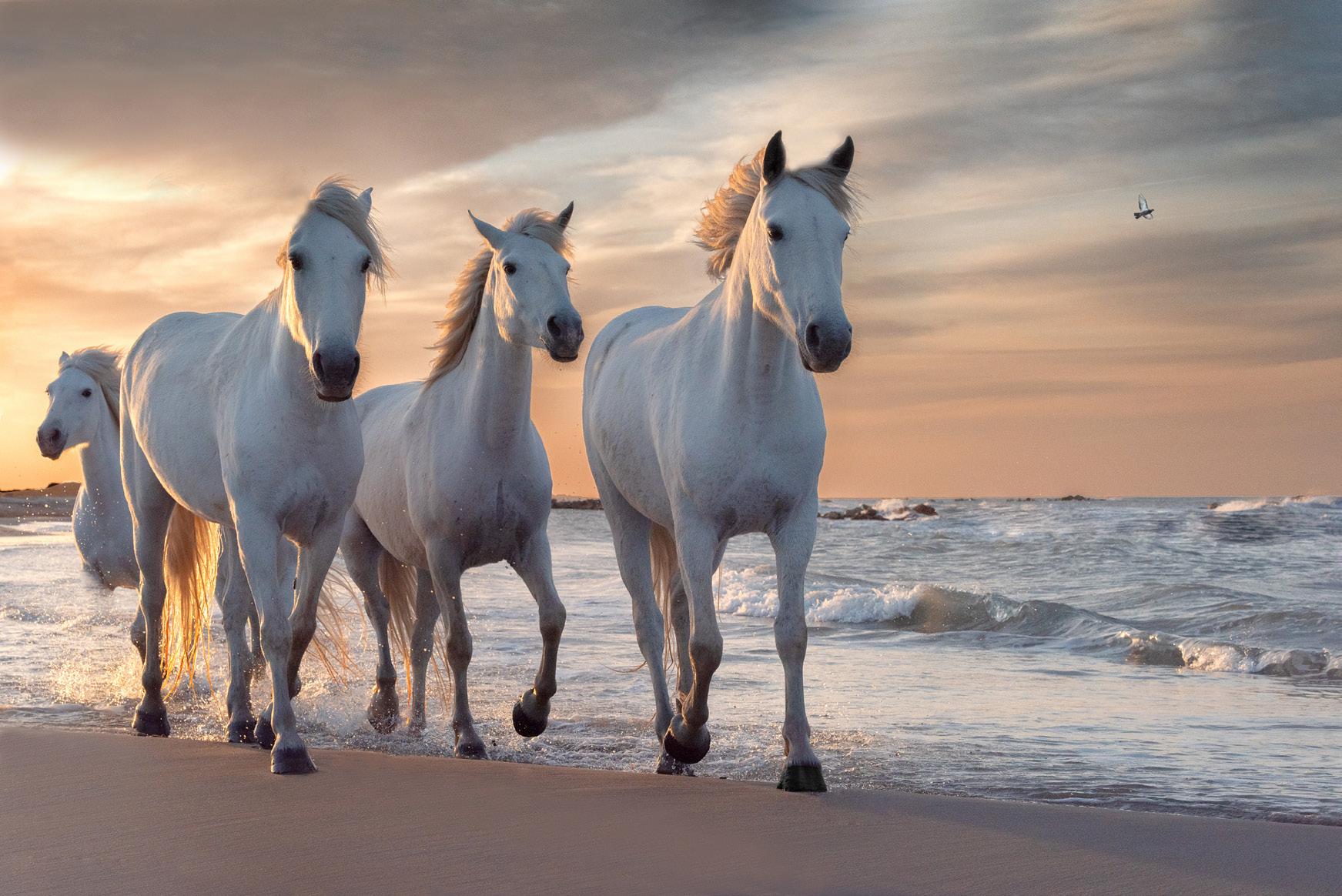

PUZZLE FUN
45
What do I need to know about my yearling?
A yearling is a colt or filly between the ages of one and two years old. These horses and ponies aren’t foals anymore, but they also haven’t quite reached adolescence (their teenage years!) yet.

CHARACTERISTICS
Yearlings are most likely fully weaned and independent of their mothers. They sleep less and spend more of their rest time standing rather than lying down. Play is essential at this time, as is interaction with other horses and ponies. Youngsters are inquisitive and enjoy mouthing anything they can find in their pastures or stables. Balls and other safe horse toys can satisfy their curiosity. These young horses and ponies need room to move so they can
Did you know
As your yearling comes close to his second birthday, you may hear people refer to him as a ‘long yearling’.
exercise and grow up strong. This period is also a time of rapid growth, so appropriate nutrition is important. It is possible to overfeed a young horse or pony, and care must be taken not to encourage too rapid growth, which can lead to joint problems. A youngster should be on the lean side rather than carrying a lot of weight.
TRAINING
During this time, the young horse or pony should continue learning to be handled, lead quietly and stand for the vet and farrier. Short training periods to teach good ground manners while a horse or pony is young will make your life easier later on. NOTE: A pony or horse under two years old is too young to start ‘work’, and any ‘work’ done at this time risks causing serious damage to the developing body.
46
What are the signs I need to call a dentist for my pony?
Ideally, your pony’s teeth should be checked by a dentist at least once a year and, better yet, every six months. In between these appointments, look out for the following signs that suggest you might need the dentist to come look at your pony sooner than your next scheduled appointment:

• Quidding: Quidding is when a pony spits out balls of hay he has already chewed. A pony that quids is not chewing his food properly. This can cause the pony to lose condition as his full nutritional needs are not being met.
• Weight loss: If your pony is struggling to chew, he cannot extract all of the good nutrition he needs from fibrous feeds such as grass or hay. Bad teeth can therefore contribute to weight loss and also result in your pony being prone to choke and impaction colic.
• Slow eating: If your pony has broken teeth, infected gums, sore cheeks or any other pain in the mouth caused by dental problems, he may chew his food very slowly. This can lead to weight loss and poor nutrition, especially if the pony is rushed when eating, by, for example, other ponies wanting to steal his food.
• Spilling food: A pony that eats by spilling or throwing concentrate feed may be anxious about his food and want to prevent it from getting removed or stolen. Alternatively, he may struggle to hold the grain in his mouth and chew.
• Bad odour: If there is a bad smell coming from your pony’s mouth or nose, you should ask your dentist to check for an infection in the mouth.
• Drooling: Ponies may drool after having eaten plants containing fungi or other irritating substances, or something might
be embedded in the gums or under the tongue. Alternatively, some ponies drool because they have a dental problem.
• Sinus discharge: A small trickle of clear fluid is normal from your pony’s nose, but a running nose with thicker liquid can be a sign of a sinus or dental infection.
• Dehydration: Ponies with bad dental problems may be hesitant to drink cold water. A lack of water can lead to choke and impaction colic, and difficulty getting all the necessary nutrition from the food.
• Head tossing: There are many reasons why a pony may toss his head, but as tooth problems are a common cause, the teeth should always be checked.
• Head shy: If your pony is head shy and does not want you to touch or groom his face, then a painful dental problem could be the cause.
• Playing with the bit: A pony that fusses with the bit may be reacting to discomfort caused by the bit itself, but in some cases, the issue is actually a dental problem that makes holding onto the bit uncomfortable. Sometimes extra teeth can be a problem, and other times there may be sharp hooks or points that are causing general mouth pain.
• Spooking: Dental pain can cause ponies to become spooky and bolt.
47
PRODUCTS WE LOVE
Abus Pikeur AirDuo
Abus Pikeur has created a 2-in-1 superstar! The AirDuo is a hybrid riding helmet, making use of two different manufacturing techniques for the best possible shock absorption while keeping the helmet lightweight. The helmet has loads of ventilation to keep your head cool on and off your pony, while the low-slung shape of the helmet offers extra protection. The helmet has an Easy Zoom adjustment system to fit you perfectly in both width and height.
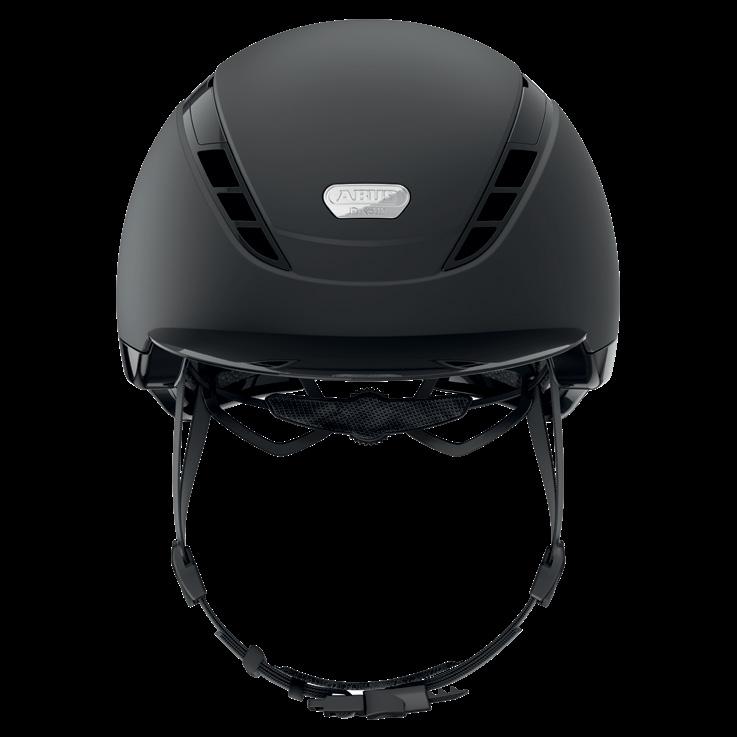
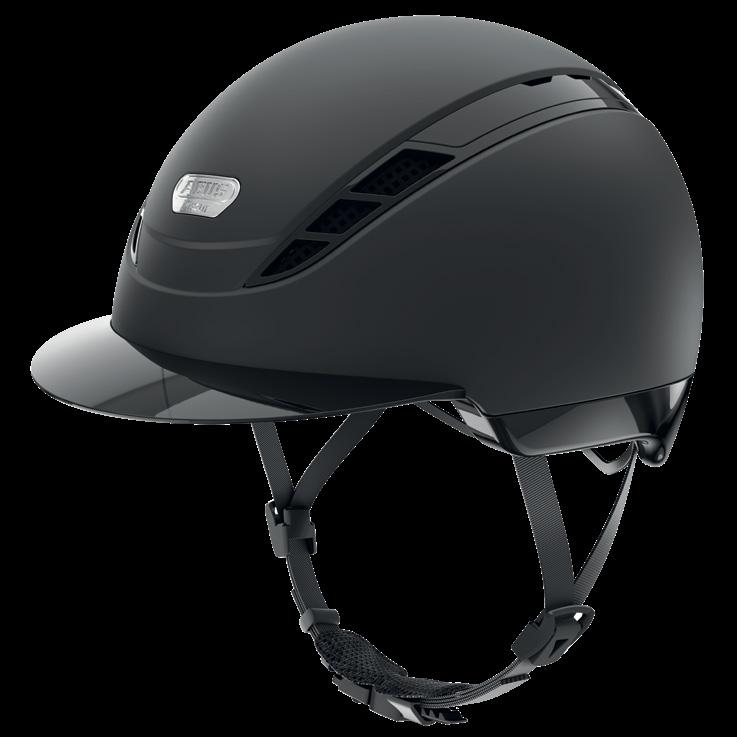
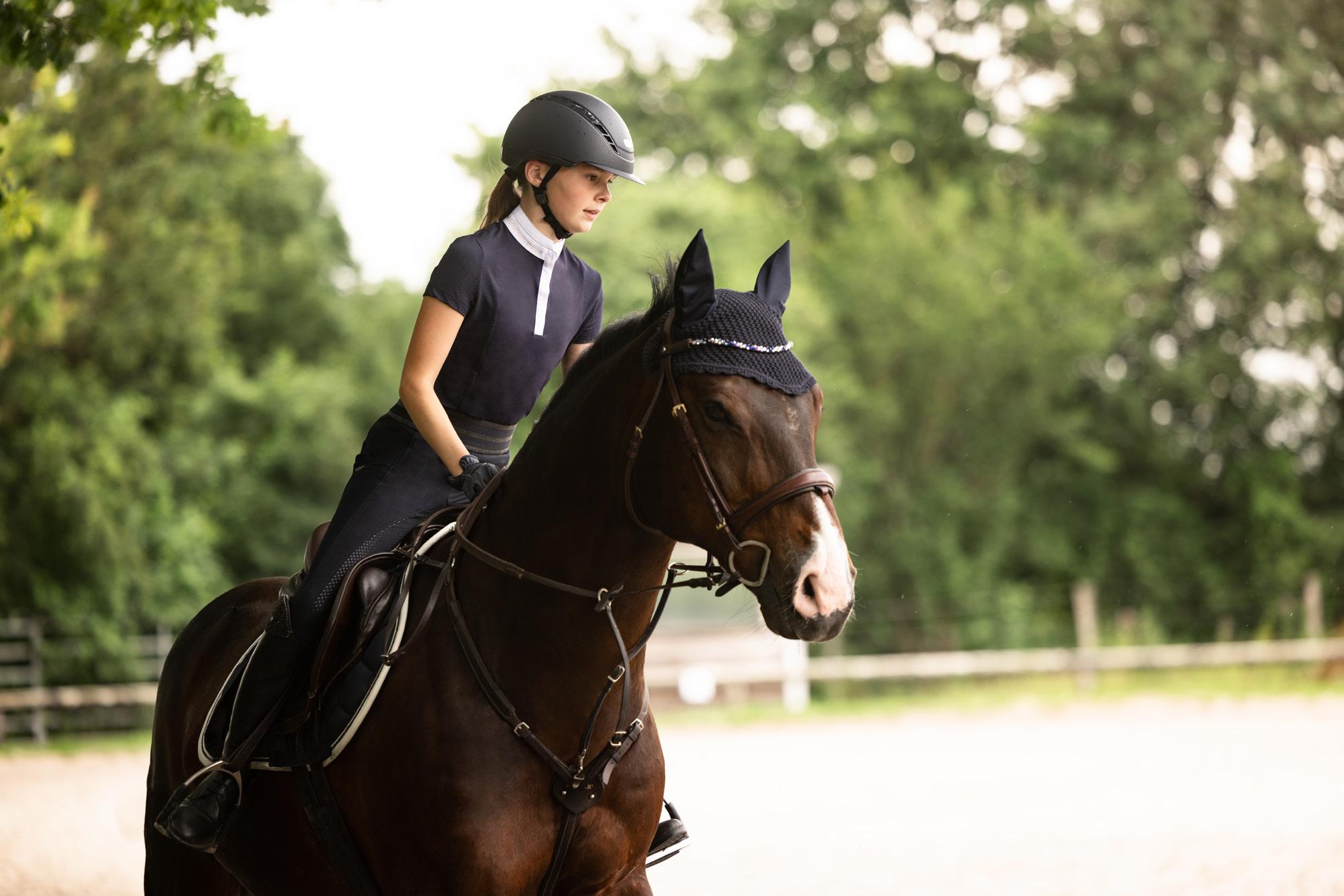
Another cool feature on the AirDuo is the removable visor, so you could jump off your pony and straight onto your bicycle with little change!
Available in Black and Navy online and at select Western Shoppe branches, sizes for 48-58cm. VG1 certified. www.westernshoppe.com
48
OUR NEXT EDITION OF HQ PONY MAGAZINE IS AVAILABLE ON 5 MAY. SEE YOU THEN!























 Ashlee Taylor
Ashlee Taylor
 Mikaela Martin
Mikaela Martin






























